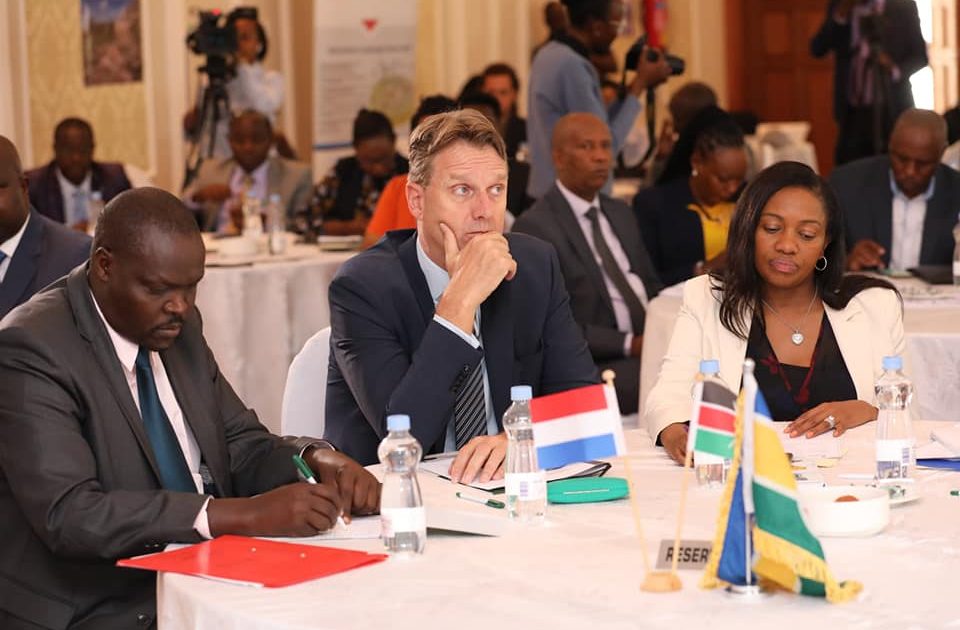Rapid spike in population, unplanned urbanisation, climate change, uncontrolled landfilling to develop new residential areas, haphazard disposal of waste into the existing drainage system, and encroachment of lakes, canals, and rivers have all played a role in making Nakuru County prone to flash floods.
Against this backdrop, Governor Susan Kihika has announced that her administration has begun embracing the “sponge city” concept as a possible solution to minimise the frequency and severity of floods and improve water quality in the devolved unit.
Governor Kihika explained that a sponge city is one that is built to passively absorb, clean, and use rainfall in an environmentally friendly manner, reducing polluting and hazardous run-off.
Sponge cities rely on natural resources such as lakes, rivers, grass, and soil to create absorbent ground surfaces that allow rainwater to be stored.
She stated that the approach also comprises permeable roadways, rooftop gardens, rainwater harvesting, rain gardens, green spaces, and blue spaces such as ponds, rivers, and lakes.
“Nakuru’s sponge city programme aims at using porous pavements, rain gardens, green roofs, urban wetlands, and other innovations to absorb water during storms. The soil then purifies that water and gradually releases it—much like a sponge,” Ms. Kihika pointed out.
She added, “Through Public-Private Partnerships, we want to put in place a sponge city system that allows water to seep into the soil whenever it rains, rather than directing it away. This concept can significantly contribute to mitigating the negative effects of climate change. Green spaces set aside in Sponge City’s design absorb carbon dioxide and consequently contribute to a lower amount of the greenhouse gas in the atmosphere,” she said.
Speaking after signing a Memorandum of Understanding with the Netherlands Ambassador to Kenya, Mr. Henk Jan Bakker, towards enabling Nakuru to adopt the Sponge City concept under the Water as Leverage (WaL) programme, the Governor said the initiative aimed at making the city withstand variable temperatures, drought, and heavy rainfall.
“By creating large spaces to hold water in the city centre—such as parks and ponds — storm water can be retained on site, helping prevent floods. Sponge infrastructure offers ways for water to seep down and recharge groundwater for times of drought. The idea of a sponge city is to recover and give water more space,” Ms. Kihika said.
The WaL programme is an initiative of the Government of the Netherlands that promotes sustainable social, economic, and water climate resilience to accelerate climate change adaptation.
The WaL team has committed to developing innovative, climate-resilient water-related infrastructure solutions for Nakuru that will contribute to addressing urgent water and climate adaptation needs.
Ms. Kihika noted that as highways, buildings, and other infrastructure pave over land and shrink green space, surface flooding has emerged as the most serious water-related problem in Kenya, with floods affecting scores of the country’s cities each year.
“We want to have ground surfaces that mimic sponges and absorb rainwater, which is then naturally filtered by the soil and can recharge urban aquifers. The collected water can be extracted through urban or peri-urban wells, treated, and reused for the city’s water supply,” noted the County boss.
Urban drainage systems in most Kenyan cities, she observed, are “insufficient to cope with rising urban flood risk” amid climate change, adding that Sponge City is an innovative initiative which transforms cities into resilient, water-secure, and environmentally sustainable urban centres.
She said they sustainably absorb, store, and filter flood waters, as well as supply water efficiently during the dry season.
“Urban planners and civil engineers have always assumed that drainages are a solution to excess storm water. We think we can use dykes to protect a city from being flooded, and we drain away all the water, but instead, such structures are actually causing floods. Some of these infrastructures are killers of the natural system,” she noted.
The WaL programme sponge city concept promotes a more harmonious relationship between humans and nature that in effect gives water more room to soak in and pool in urban areas, such as parks that are dry in some seasons and become shallow ponds or channels in rainy seasons.
“Floods are not enemies; we can make friends with floods,” Governor Kihika said.
The Governor indicated that the Sponge system cuts the amount of rainwater that enters sewage systems, something that has been a problem for the city, and reduces the need to manually remove water without installing large-scale infrastructure like sewage pipes.
The concept was first introduced in China in the early 2000s to address surface-level flooding in urban areas. In 2014, pilot projects were initiated in several Chinese cities.
As climate change leads to more extreme weather events like heavy rainfall and droughts, it has become crucial to integrate floodwater management systems in cities. The World Meteorological Organisation reported that around 44 per cent of global weather-related disasters in August 2023 were linked to flooding.
This highlights the growing global phenomenon of flooding and the urgent need for preventive measures.
Moreover, the World Economic Forum (WEF) found that ‘nature-based solutions to climate change’ were up to 50 per cent more cost-effective than engineered alternatives.
Bakker observed that the concept of sponge cities was still relatively new, and each urban area faces unique challenges that require tailored solutions based on the region’s needs and biodiversity.
However, he said the underlying principle remained the same: utilising nature-based solutions to tackle flooding.
“By transforming cities into sponge cities, we can create more resilient urban environments, better manage flood risks, and protect our communities from the increasing threats of climate change,” said the envoy.
By Anne Mwale





